With their Palomino camper and a truck-load of determination, professional photographers, Matt Breiter and Sarah Trybula, wow with stunning images of the American West. Their secret? Deep research, going where most RVs wouldn’t dare, long-distance hikes, and sheer grit.
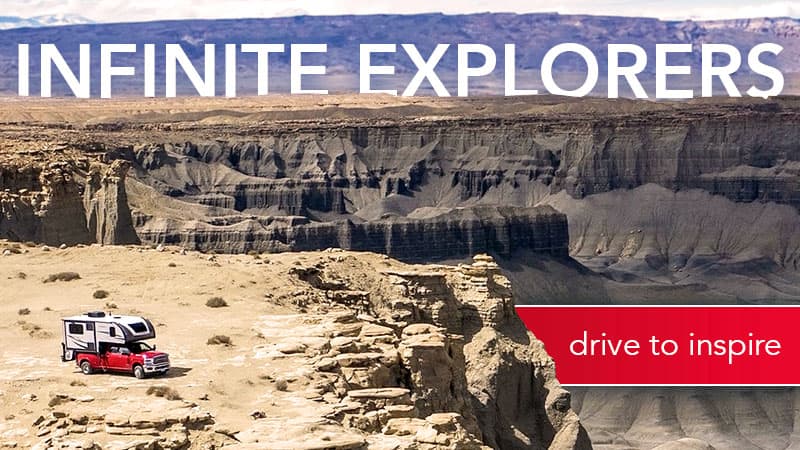
It wasn’t that long ago that being a professional photographer required a dark room; lightboxes, timers, enlargers, trays, easels, graduates, chemicals, papers, negative holders and those wonderful amber safelights. Don’t forget an analog clock to tell the time. Leave your bright LED smartphone outside. One errant text and your shots are shot.
Today, pro photographers are armed with incredibly capable digital cameras with instant viewing, endless image storage, crazy resolution, ISO to the moon and even video capabilities. No developer to drop. No papers to expose. No analog anything.
For those of us who might think that’s cheating, or that the next generation has it easy, stop right there. Yes, digital photography is a world more convenient, but you still need the chops to cut it as a paid professional.
In fact, an argument could be made that you have to be even more skilled, have more talent, and be even more driven and focused because technology has made photography so much more accessible. Anything less and that AI-enabled iPhone shot will do just fine, thanks. Many pro photographers from decades past may not have made it in this hyper-competitive environment.
This is why we’re so impressed with Matt Breiter and Sarah Trybula. Not only are they both young and successful professional photographers with stunning work, but they’re also passionate truck campers taking their photography skills on the road. Far from taking the easy path, these two do the research, learn the skills, practice their art and continuously push themselves and their work to the limit. Easier than a dark room? I think not.
What’s even more exciting is these two are just getting started with the synergies of truck camping and photography. From everything we’ve seen and gathered about this dynamic duo, there can be no doubt they’ll bring us incredible images for years to come. And that’s before they go to Europe. The possibilities are truly Infinite for these two Explorers. Meet Matt and Sarah.
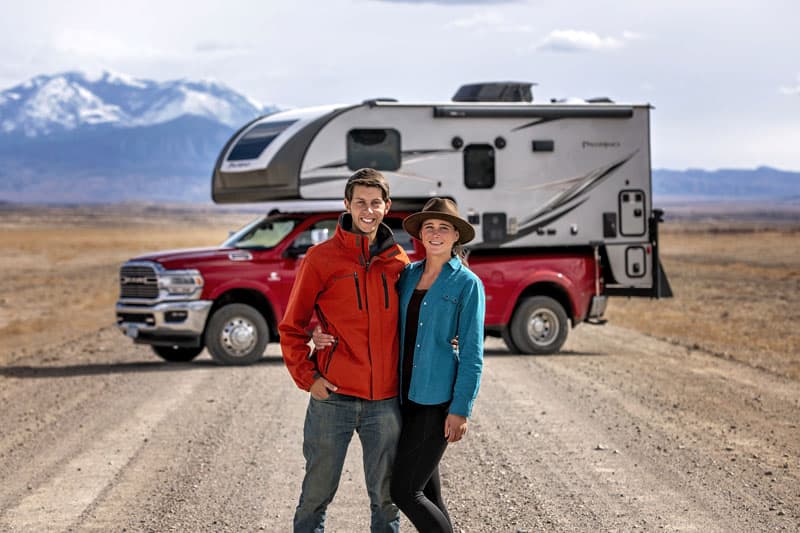
Above: Matt Breiter and Sarah Trybula with their Palomino HS-2910 and Ram 3500
How did you get into truck campers?
Sarah: We were looking for a way to explore places around North America for photography. We wanted to be able to stay in those locations rather than driving back and forth to hotels.
While researching various RV options, truck campers stood out. They were compact enough to go where we wanted to go and roomy enough for two people. We went to our local camper dealership in Minnesota to see what truck campers were like in person, and instantly fell in love with the Palomino HS-750. We purchased it in February of 2020.
Had you ever RVed before?
Sarah: Not before we bought our camper. We started truck camping last year with a 90-day trip. Before that, we traveled and stayed in hotels. Owning a camper has been a learning experience, like anything else. We figured it out as we went along.
Matt: Neither of us had RVed before, even as kids. We did tent camp. When we picked up our camper we were able to get the camper loaded on the truck. After that, we didn’t worry about taking it on and off. We focused on learning the camper for that trip. That process came naturally.
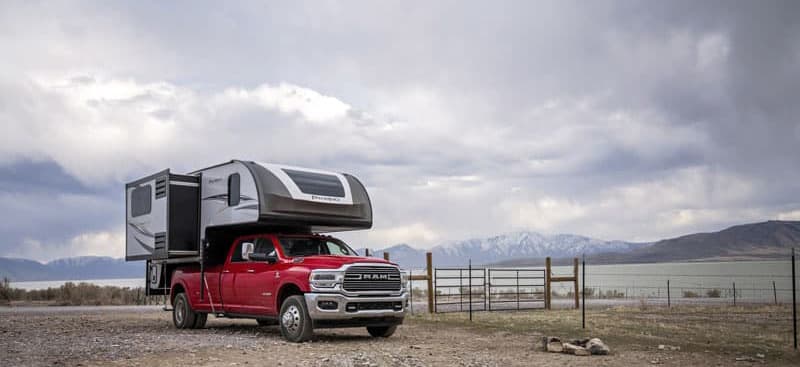
Above: Their Palomino HS-2910 boondocking at a Utah lake
Your current Palomino is a HS-2910. Why did you change campers?
Sarah: We camped for 135 days in the HS-750. From that, we learned that we needed a little more space for the longer trips we were taking. That’s when we decided to get a 2021 Palomino HS-2910.
We love hard-side truck campers and their ability to camp in four seasons. The fully insulated walls are great for the winter. There are a lot of windows to open in the Palomino HS-2910 if it gets warm out. We don’t use the air conditioner, so the ability to ventilate is important.
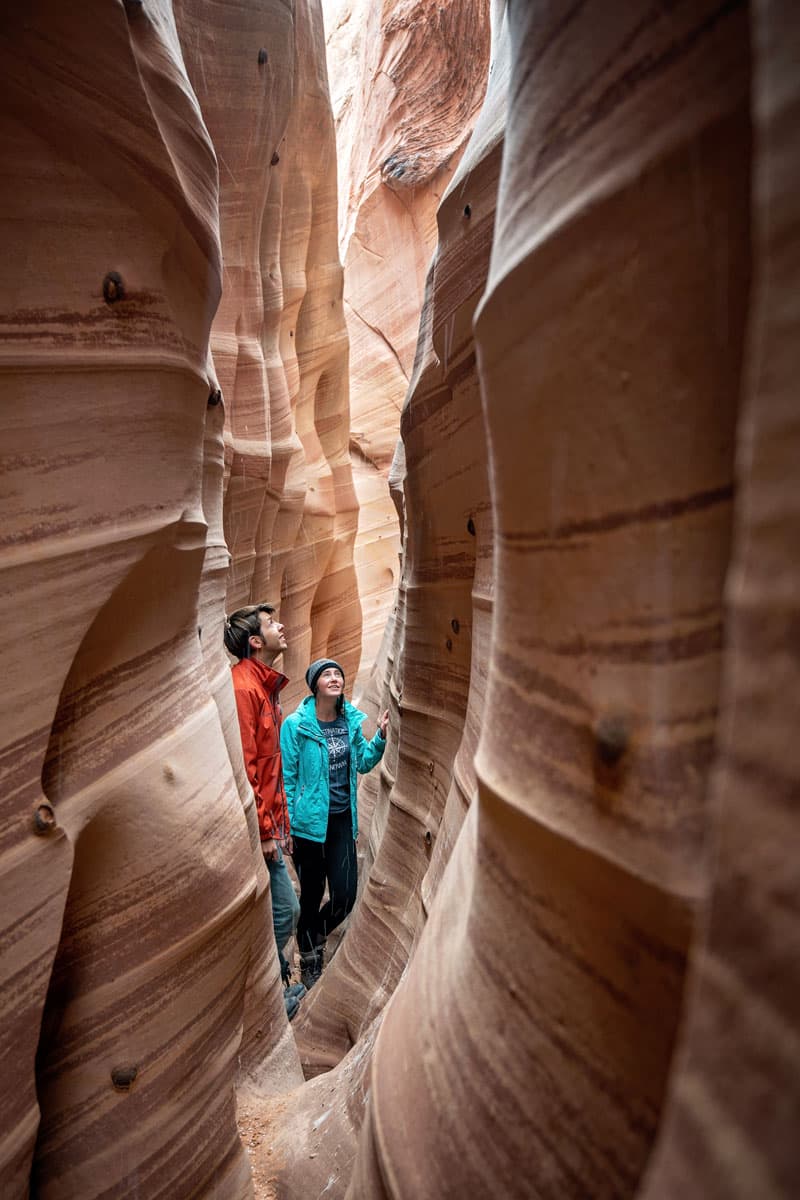
Above: Zebra Slot Canyon in Utah
Your photography and videos are very well done. Are photography and video production what you do for a living?
Matt: We both own our own photography businesses. We are full-time portrait photographers for weddings, families, and seniors. Our businesses are under our names. My business is Matthew Breiter Photography. Sarah’s is Sarah Trybula-ST-Photography.
When we are at home, we’re taking portraits at events and often working 70-hours a week. That’s how we afford to take time off and go truck camping.
We usually don’t work much on the road. We do personal photography and video production, but not the portrait-style photography that earns our income.
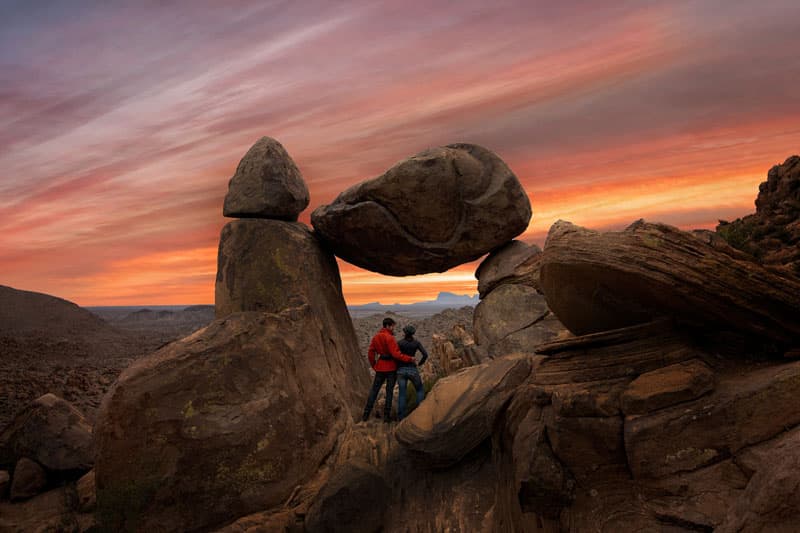
Above: Big Bend National Park, Texas
Sarah: We created Infinite Explorers to post things related to our adventures. It’s separate from our businesses and combined since we’re both contributing.
With our videos on YouTube and photographs on Instagram and Facebook, we hope to inspire people to travel. That’s why we’re documenting our journey. We want to show people what life on the road is like.
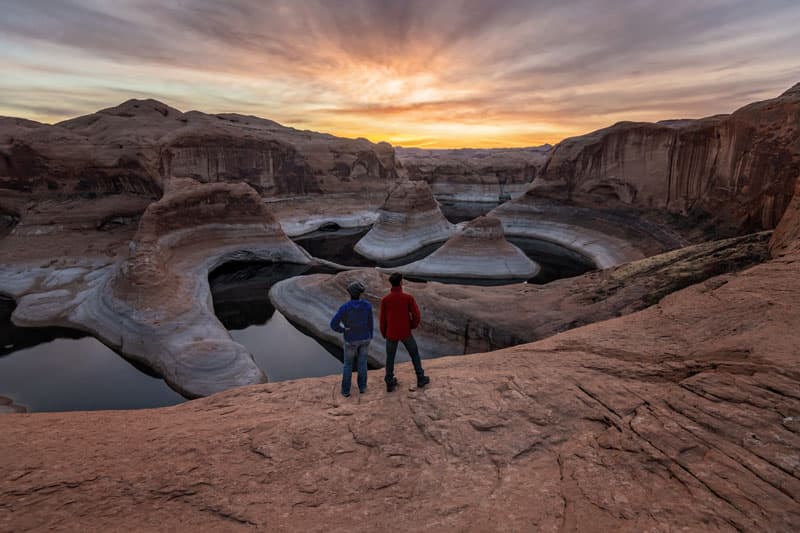
Above: Reflection Canyon, Utah
So many people work 9 to 5 and don’t travel until they are retired. We know people who worked for decades and then passed away a few months after they retired. We decided not to wait. We are traveling now while we can take long hikes and see more things. We have our photography work and have the income to pay for it.
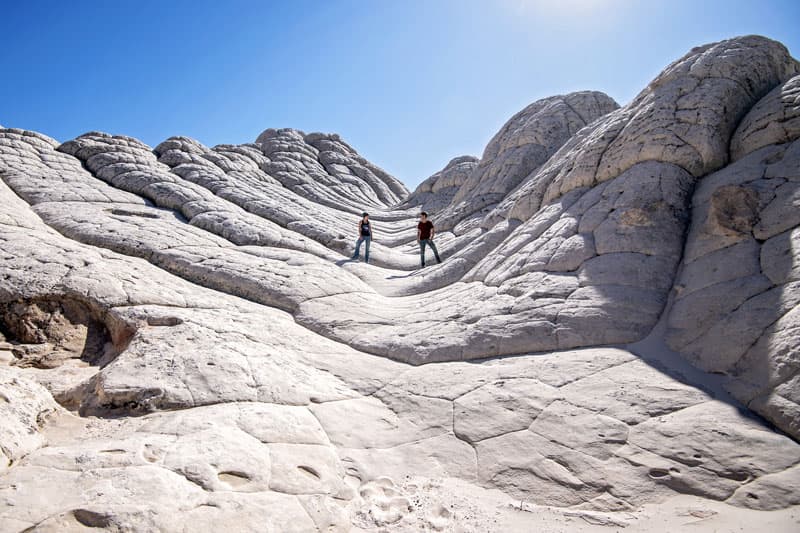
Above: White Pocket, Arizona
Matt: With Infinite Explorers we are developing content. There’s actually a lot of planning involved. We will look at the weather for the week. If it’s windy or the light isn’t right, maybe there will be a cloudless night for Milky Way photos.
Sarah: Even before we got on the road, we probably did 500-hours of research to find the cool places we visited. You have to dig deep to find the off-the-beaten-path scenic places.
“You have to dig deep to find the off-the-beaten-path scenic places.”
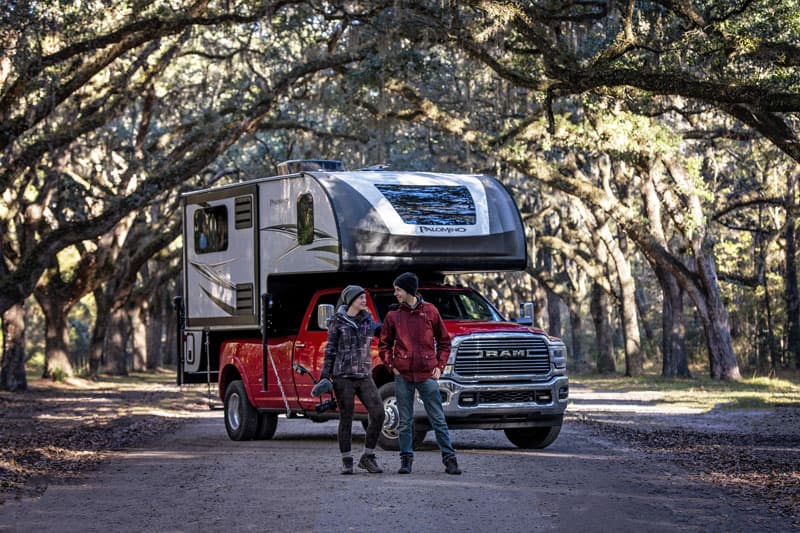
Above: Wormsloe Historic Site, Georgia
Your research and hard work certainly paid off. Are you formally trained for photography?
Matt: I went to college for studio photography and business. A lot of my skills are self-taught from being dedicated to the craft. A lot comes from having an eye for it. Some people will see my photographs and ask about my camera. I tell them what I use, and add, “You really need to know how to use the camera to get the photos you want.” There’s a lot that goes into it.
Sarah: I took online schooling through New York. It was a short course, but it taught me the basics. After that, I met other photographers and asked to intern with them. I learned a lot of skills from that experience. I also went out and practiced. You are going to mess up but, like anything, practice makes you better.
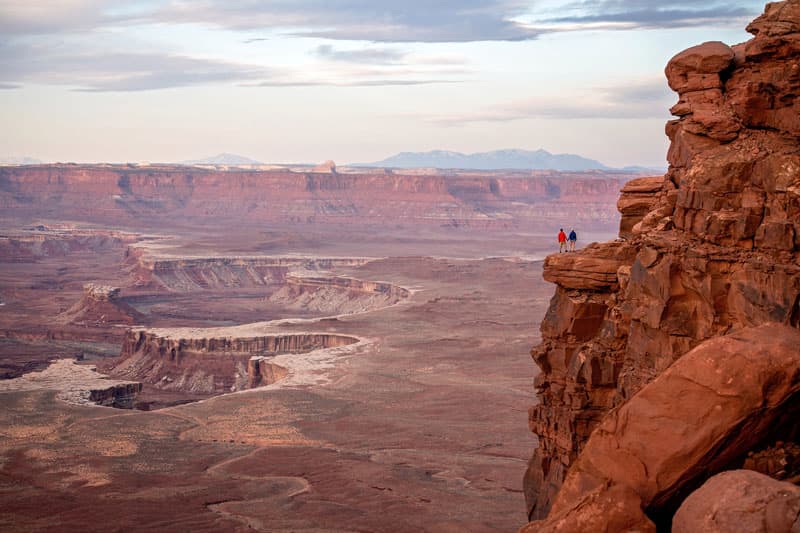
How do you get those shots like the one in Canyonlands (pictured above) where you are far away on a cliff? Do you leave your camera somewhere and have a remote?
Matt: For a photograph like that you have two options. There’s a 20-second self-timer in the camera, so you can’t be that far away. In the Canyonlands scenario, I used a remote trigger.
Photography is about capturing the right light. Through research and instinct, we know where the light will be at different times of the day. We know where the highlights and shadows will be.
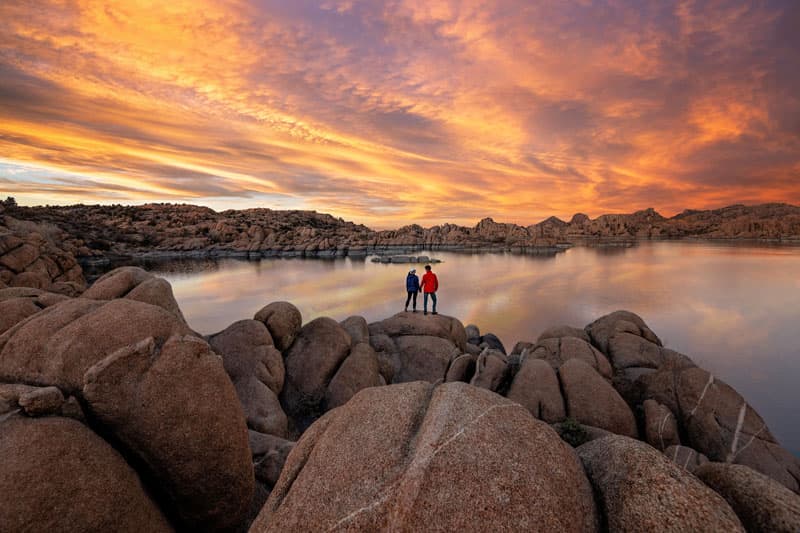
Above: Watson Lake, Arizona
We come up to the scene, know where we’re going to stand, go to the spot and take the photo. We like to show human scale, so we’re in quite a lot of our pictures. We still do take landscape photos without people but, with us being in the scene, people see that you can go there and experience that location.
The photographs that have a “wow” factor, we sell as prints. Some people will message us and ask for a metal print or the sunrise photo we took at Reflection Canyon. We’ll send them a list of prices and the things we have available.
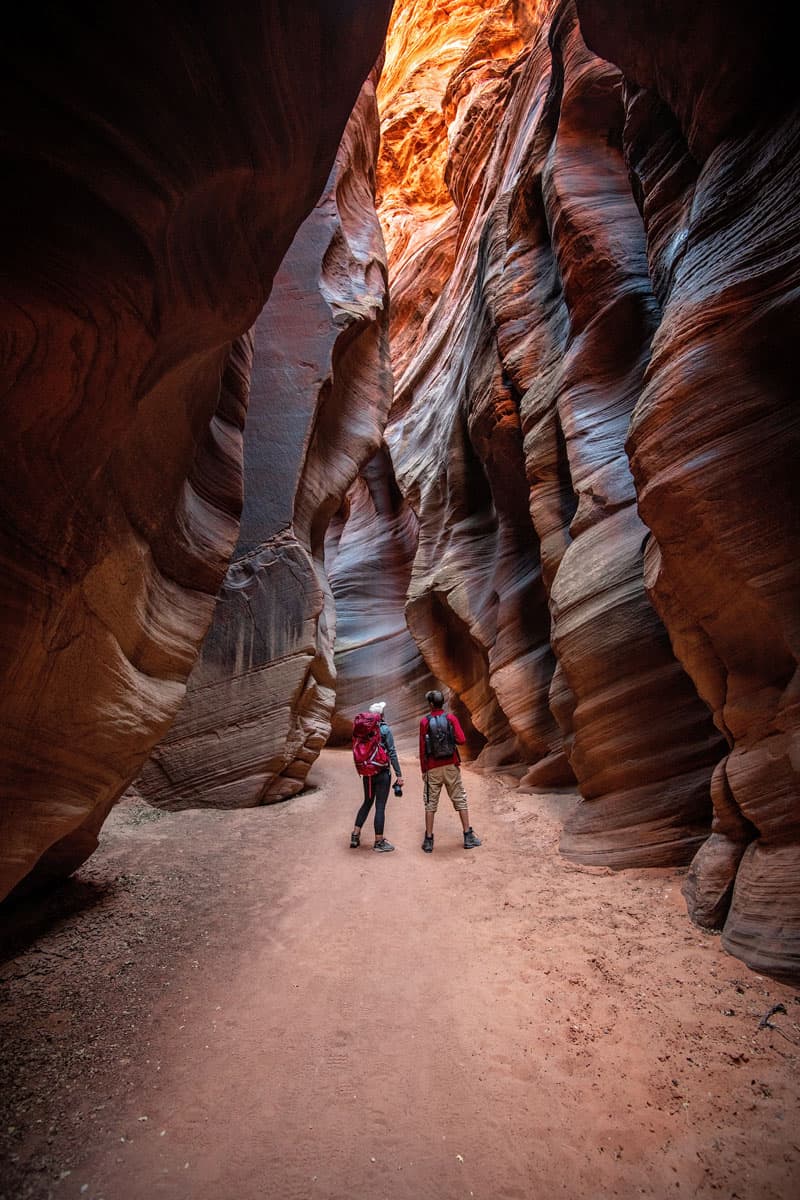
Above: Buckskin Gulch, Utah
Other than taking amazing photographs, what do you enjoy doing while truck camping?
Sarah: We love hiking and exploring the National Parks. Over the next six months, we have over 1,000 miles of hiking planned. That’s where the planning I do when we’re not traveling comes into play. I enjoy picking out the coolest places and designing our route around those destinations.
We have also learned to be super flexible. We were hoping to go to New Mexico this year, but it snowed and was dipping into the teens. We didn’t want to freeze our camper’s plumbing so we decided that we’ll go next year.
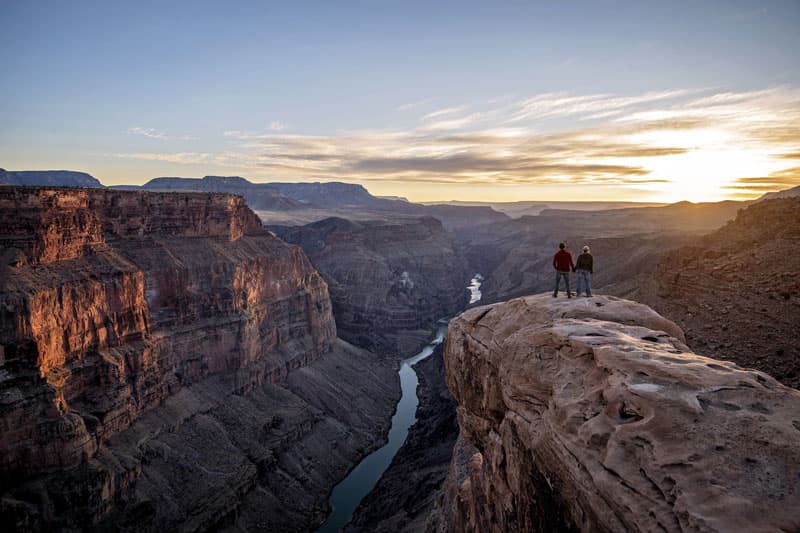
Above: Grand Canyon, Arizona
You mentioned that you have taken your truck camper to places that other RVs can’t go. Where have some of those places been?
Matt: There have been a lot of places like that. A stand-out was in Toroweap, Arizona, which is part of the north rim of the Grand Canyon. The way in and out is washboard and would wear and tear a regular RV. It was perfect for a truck and camper.
Vermillion Cliffs in Arizona had six-inch deep ruts. Other RVs would likely bottom out. For where we want to go and what we want to do, a truck camper rig is absolutely the way to go.
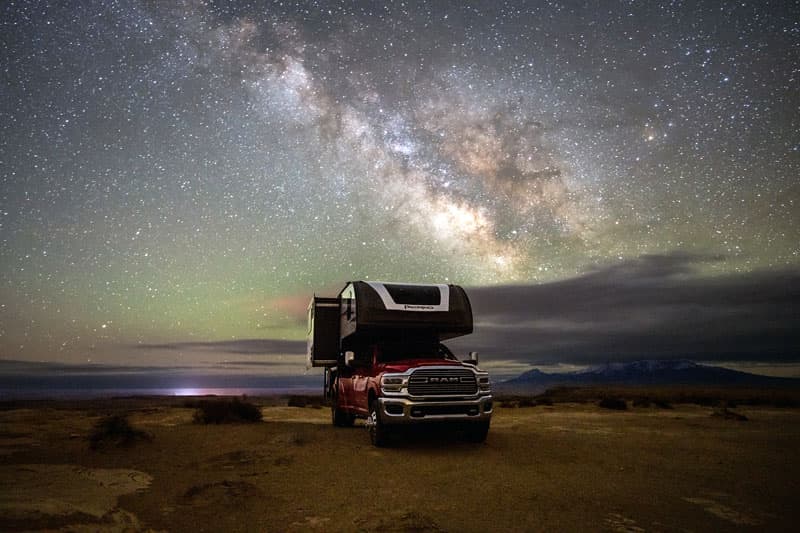
Above: Escalante, Utah
You’re out on the road as much as eight months a year. Why not sell the house and go full-time in the camper?
Sarah: Our goal is to book photography sessions and weddings throughout the United States, and then go full-time. Right now we go back to the Midwest and shoot weddings and portraits because that’s where our clients are located.
When Covid started, we had a few weddings that were rescheduled, but otherwise, it was the busiest year we’ve had for portraits. It just shows anything can happen in life. Our clients were saying, “Let’s get family photos done because everyone is home”.
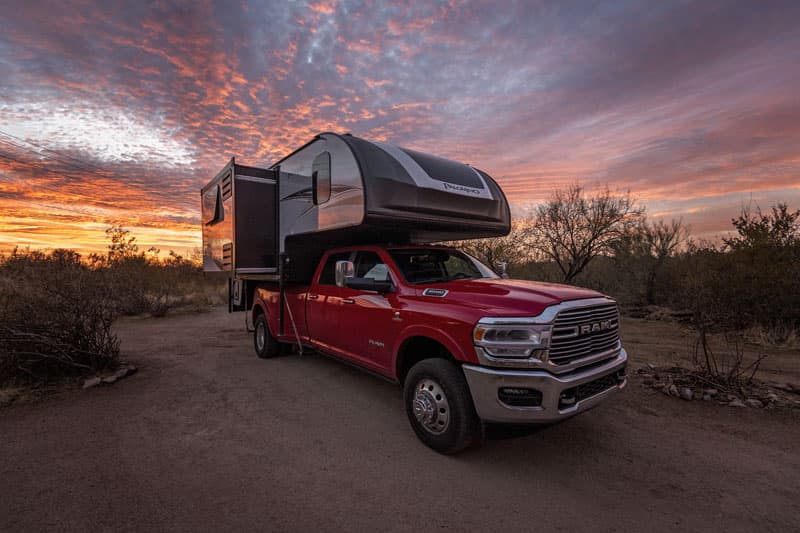
Above: Boondocking in Apache Junction, Arizona
Where did the name Infinite Explorers come from?
Matt: We are planning to travel beyond the United States. That’s where “Infinite” came from. And we are, “Explorers”. We hike to some of the most remote locations across the USA and explore off-the-beaten path places. We want to see what the Milky Way looks like at 3am over the red rocks or mountains. It’s who we are.
“We want to see what the Milky Way looks like at 3am over the red rocks or mountains. It’s who we are.”
Sarah: We love to talk about traveling around the world. Ideally, we would ship our rig, but we’re still looking into what makes the most sense. If we are able to ship our truck and camper, we would have the most freedom to go where we want, and camp there.
Matt: We want to explore Iceland, then head towards France and visit other countries from there. It would take about a year, but it would be worth it.
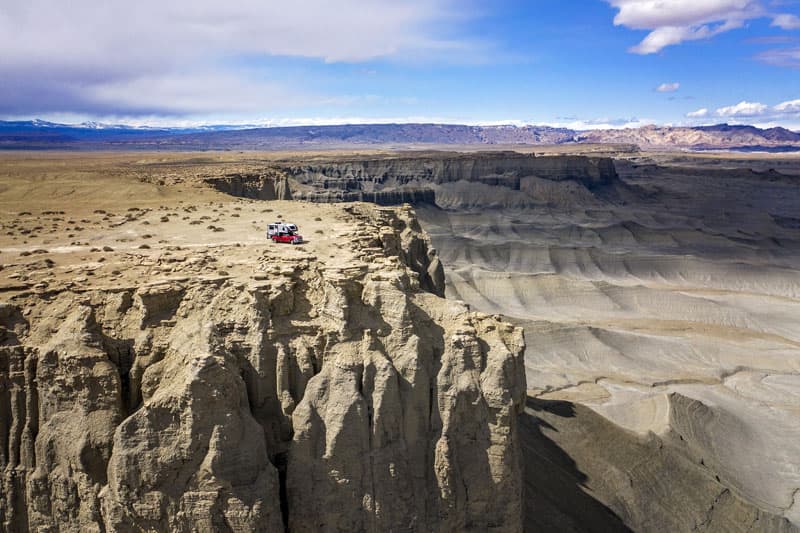
Above: Boondock camping in Utah
How much do you boondock when you’re out?
Sarah: We boondock 99-percent of the time. Boondocking helps to keep costs down and allows us to stay in areas that aren’t crowded.
We use a 200-watt solar panel to keep our truck camper charged, and are able to charge our equipment with our Ram 3500. When we need to refill our fresh tank or dump the holding tanks, we find a campground or dump station. We have learned to be very resourceful.
“Boondocking helps to keep costs down and allows us to stay in areas that aren’t crowded.”
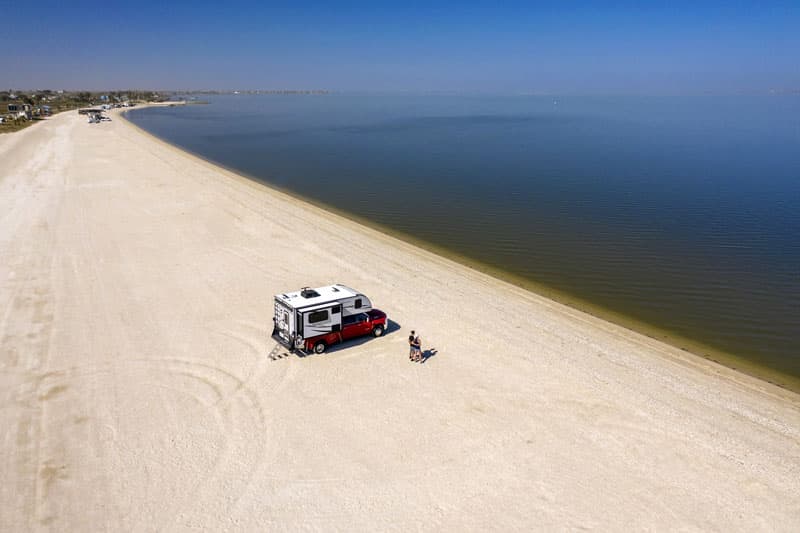
Above: Magnolia Beach, Texas
What are some of the challenges you’ve encountered during your first year of truck camping?
Matt: Initially it was a challenge to adjust to things like taking short showers. After a 20-mile hike, it would be nice to have a long shower, but it’s not the end of the world.
Sarah: Variety with our meals has been another challenge. We find we are eating the same stuff over and over. We don’t want to do things like cook chicken in the oven and use up our propane. We make simple things.
Matt: When we’re off the beaten path, we are frugal with our heat. In the winter, if it’s above 35-40 degrees we bundle up and don’t use the heat. If it’s freezing or below, we set our thermostat at 50.
Sarah: Reception with our cell phone has been another challenge. It’s frustrating when we get content to post and we can’t because we’re out of cell range.
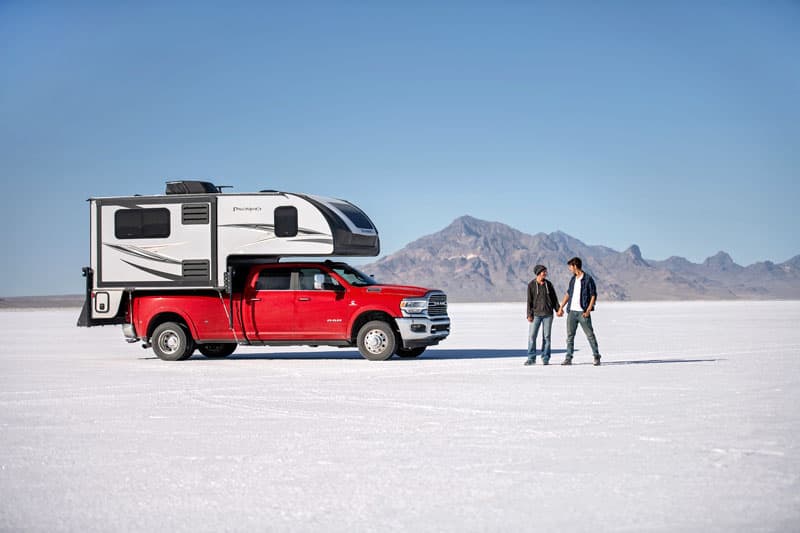
Above: Bonneville Salt Flats, Utah
We can relate to those challenges. After a while, they become part of the lifestyle, and entirely worth it. Is there anything else you’d like to share?
Sarah: When we got into truck camping, I didn’t have any expectations. I wanted to get on the road, figure things out, and make things work. We’ve been able to do that.
Matt: Even though truck campers are small, we don’t need a lot of space to be happy. After our first trip, we went home and said, “Why do we have all this?” Younger people should try this experience. If it’s not for you, it’s fine, but school will always be waiting for you.
“Every day is a new day with a different landscape. We love our life on the road.”
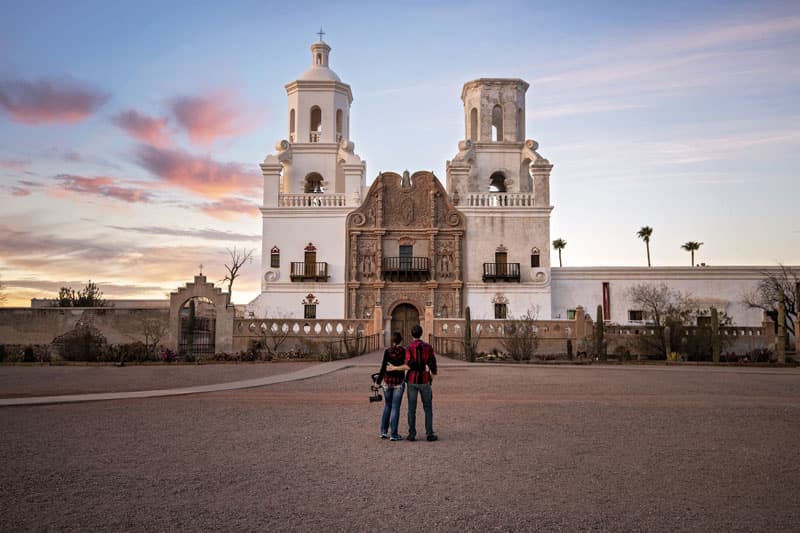
Above: San Xavier Del Bac Mission in Tucson, Arizona
Sarah: We have simplified our life because we’ve realized that we don’t need lots of things. Living on the road we do not have the same routine. Every day is a new day with a different landscape. We love our life on the road.
Matt: Less really is more. Why not wake up to a new view every day?
Matt and Sarah’s Rig
Truck: 2020 Ram 3500, crew cab, 4×4 dually, diesel, long bed
Camper: 2021 Palomino HS-2910
Tie-Downs and Turnbuckles: Torklift
Suspension: None
